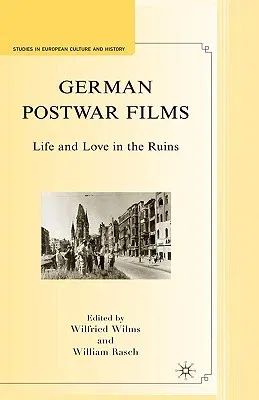German Postwar Films: Life and Love in the Ruins (2008)Hardcover - 2008, 16 December 2008

Qty
1
Turbo
Ships in 2 - 3 days
In Stock
Free Delivery
Cash on Delivery
15 Days
Free Returns
Secure Checkout

Part of Series
Studies in European Culture and History
Print Length
224 pages
Language
English
Publisher
Palgrave MacMillan
Date Published
16 Dec 2008
ISBN-10
0230608256
ISBN-13
9780230608252
Description
Product Details
Book Edition:
2008
Book Format:
Hardcover
Country of Origin:
US
Date Published:
16 December 2008
Dimensions:
21.08 x
13.97 x
1.52 cm
ISBN-10:
0230608256
ISBN-13:
9780230608252
Language:
English
Location:
New York
Pages:
224
Publisher:
Weight:
362.87 gm